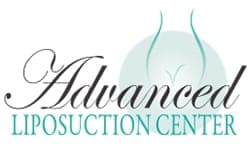Facelift alternative- Best Procedure to Look 20 Years Younger

IS FAT TRANSFER TO THE FACE INVASIVE?
If you are willing to look 10 to 20 years younger than your age, it does not mean you need to opt for invasive surgical methods. So let’s talk about Face lift alternatives as fat transfer to the Face is among the least invasive methods today. It is also a good replacement for traditional facelift.
As liposuction techniques are developed over time, Nowadays, fat can be easily removed with minimal incision without causing damage to the surrounding tissues. However, in many cases the most invasive part of the liposuction session is harvesting of fat which usually involves separate sessions. But it can also be performed as a minor procedure when only a small amount of fat needs to be removed.
As Modern Liposuction Techniques are Safe enough that it can be done as an outpatient Procedures. Although it needs recovery time as if large amounts of fat are being removed but it’s quiet Gentle and manageable.
Fat Grafting: A minimal invasive alternative to Face Lift
Facial fat grafting is a procedure in which fat is taken from one part of the body and transferred through injection to that part of your face which needs volume enhancement. The most common areas of the Face that are mainly affected due to aging are cheeks, Under eye bags, forehead, lips etc. As this facial fat grafting process is a permanent filler but if it’s accompanied with PRP it can increase the Fat survival, but this process increases the cost.
For those considering this treatment, it’s important to have it done under the supervision of skilled professionals who specialize in facial contouring and rejuvenation. The precision of technique and post-care guidance make a remarkable difference in the outcome. Visiting the best medical aesthetics clinic ensures that your fat grafting procedure is performed using advanced methods, sterile conditions, and personalized planning. This not only enhances the natural results but also reduces the risk of uneven fat absorption or irregularities, leaving your skin smoother, plumper, and more youthful-looking over time.
In this procedure if you feel discomfort, it can easily be managed by OTC medications. And is usually gentle as other regular dermal filler.
Are the Results of Facial Fat Transfer Surgery is Permanent and Safe?
Patients are often wary when told that fat transplant to the face is essentially permanent. Yet the procedure has gained such a solid track record that enough evidence exists to win over even the most skeptical patients. Facial fat transfer is very similar to the use of dermal fillers such as Juvéderm—the only real difference is that the filler material being used is the patient’s own living fat cells. These fat cells become established and become just as permanent as other fat cells in your face. This means that while you can lose this newly introduced fat in the same way as you lost your original fat deposits, a process which in most patients literally took decades. So is using a patient’s own fat as a filler material permanent? For the majority of patients, the answer is a resounding yes.
When fat transfer is performed, the surgeon will purposely over-fill the target area, since a small amount of the transplanted cells will inevitably die. This usually occurs over the first 6 months following the treatment. What’s left after this point is there to stay. It’s your own tissue! While it is still vulnerable to the aging process it’s as permanent as any other fatty tissue found in your face. It looks and feels like your own tissue because it is. The procedure is quickly gaining a reputation of producing extremely natural looking results.
Recovery
- In liposuction area mild to moderate swelling or pain is expected but it can be controlled by OTC and prescribed medicines.
- The patient needs to wear compression bandages consistently for two weeks after surgery, including a shower pause for two weeks.
- You can settle into your normal routine after 3-7 days.
- In order to avoid resorption of newly transferred fat, your plastic surgeon will apply Botox in certain areas, which will lead to decreased muscle function, but it’s not a matter to be worried about as it is temporary
Ideal Candidates for Facial Transplant
Each surgery to restore face volume has various eligibility requirements, and your particular candidacy will be reviewed during your appointment. Patients should be healthy individuals with realistic expectations who can benefit from cosmetic surgery, according to the basic standards. Before receiving therapy for facial fat transfer, patients must have enough fat to harvest and be at a stable weight. Fillers are quite low risk, and the candidacy requirements for these procedures are not particularly stringent.
Also, you must be a non-smoker as smoking can interfere with your healing process by slowing it down. So if you smoke it’s better to quit smoking at least 4 months before your surgery. After the surgery you must also get enough rest to recover properly. Which means you need to avoid chores, your job, heavy lifting work or anything that can put stress on your face. If you take stress then you will not recover properly and many undesired results may appear, which can totally ruin your surgery and effort.
So, make sure you fill all the requirements given above before going for a facial fat transfer surgery.
How does smoking or alcohol consumption affect facelift results?
Smoking and alcohol consumption can significantly affect facelift results in several ways:
Smoking
1. Impaired Blood Flow
– Mechanism: Nicotine constricts blood vessels, reducing blood flow to the skin.
– Effect: Impaired blood flow can slow down the healing process and increase the risk of complications such as skin necrosis.
2. Delayed Healing
– Mechanism: Smoking decreases oxygen delivery to tissues.
– Effect: Delayed wound healing and increased risk of infections.
3. Increased Scarring
– Mechanism: Reduced collagen production and impaired tissue repair.
– Effect: Higher likelihood of noticeable and less aesthetically pleasing scars.
Alcohol Consumption
1. Dehydration
– Mechanism: Alcohol acts as a diuretic, leading to dehydration.
– Effect: Dehydrated skin is less elastic and can affect the quality of the facelift results.
2. Blood Thinning
– Mechanism: Alcohol can thin the blood.
– Effect: Increased risk of bleeding during and after surgery, leading to complications and longer recovery times.
Are facelifts effective for both men and women?
Yes, facelifts can be effective for both men and women. The procedure is designed to address common signs of aging, such as sagging skin, deep wrinkles, and loss of facial volume, which can affect individuals of any gender. However, the surgical techniques and approaches may vary slightly based on factors such as skin thickness, hairline, and facial structure.
What kind of results can I realistically expect from a facelift?
The results of a facelift can vary depending on individual factors such as skin elasticity, bone structure, and the surgical technique used. However, here are some realistic expectations:
1. Improved Facial Contours: A facelift can restore a more youthful appearance by lifting and tightening sagging skin, particularly in the lower face and neck.
2. Reduced Wrinkles and Lines: Deep wrinkles and lines, such as nasolabial folds and marionette lines, can be softened or eliminated, giving the face a smoother appearance.
If you want to try it out for a few months and see how it will look, try a facial Filler instead.
FAQ
Q1: Does Fat Transfer to the Face Effective?
Ans: The Facial Fat grafting can sort out natural flaws due to aging like fine lines, wrinkles, furrows etc. and it does not require repetition of injections as fat cells adapt well to their new location.
Q2: What is the ideal age for Face Fat transfer?
Ans: The people who are in their 40s or older opt for this treatment to overcome their signs of aging, while people in their 20s or 30s need this procedure to enhance their facial features.
Q3: Can we touch our face after Face fat surgery?
Ans: No, it is not recommended to touch or rub your face after surgery even if you should sleep on your back with elevated head using pillows.
Q4: Are there disadvantages of fat transfer surgery?
Ans: The rate of complication reported is relatively low i.e. 2.27% like prolonged edema > 15 days, fat necrosis, infection, graft site hypertrophy etc.
Q5: Can we apply ice after Facial fat grafting?
Ans: Yes, it is recommended to apply ice on your cheeks and eye region in order to reduce swelling and bruising.
